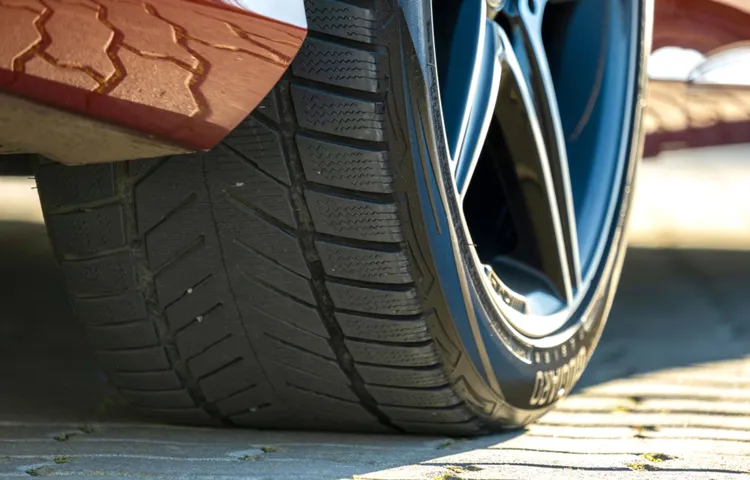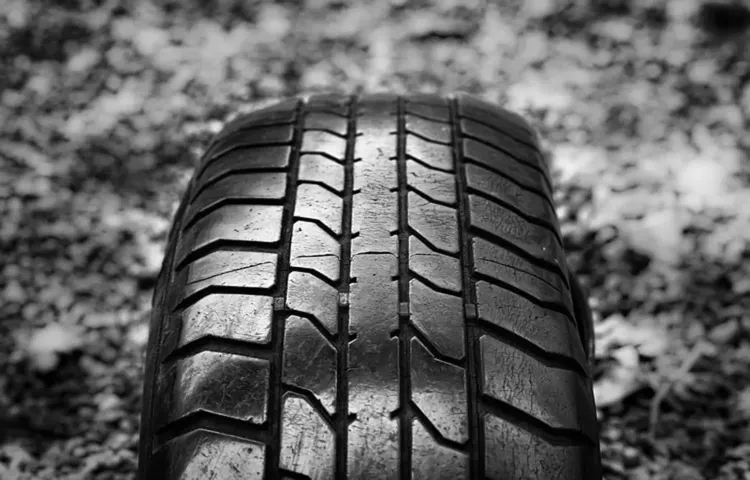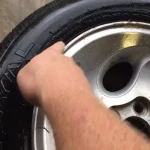Rubber is something we use in our daily lives, from the belts that hold up our pants to the tires on our cars. However, have you ever stopped to think about where it comes from and how it’s made? The answer to that question lies in natural rubber trees. These trees, which are primarily found in Southeast Asia, produce the raw material used to make rubber products.
In this blog, we will explore the source of tire rubber, natural rubber trees, and why they are so important in the production of rubber materials. So, sit tight and let’s dive into the world of natural rubber.
Table of Contents
What is Tire Rubber?
Tire rubber comes from natural rubber extracted from the sap of rubber trees. The latex sap is collected from the trees by making incisions in the bark and collecting the sap that flows out. The collected latex is then processed and treated with various chemicals to remove excess water, and then it is coagulated to form rubber sheets or blocks.
The blocks of rubber are then transported to the tire manufacturing plants where they are mixed with various additives to improve their properties. These additives can include carbon black, oils, and chemicals to improve the tire’s durability, strength, and longevity. Tire rubber is a vital component in the manufacture of tires, as it provides the necessary grip and traction that makes driving safe.
So, the next time you’re driving on the road, remember that the rubber in your tires came from humble origins – the sap of a tree.
Chemical Composition of Tire Rubber
Tire rubber is a synthetic material that’s produced through vulcanization, which involves heating natural rubber with sulfur. The resulting material, which is also known as vulcanized rubber or simply tire rubber, is used to make tires for cars, trucks, motorcycles, bicycles, and other vehicles. Tire rubber has a unique chemical composition that includes various polymers, fillers, and additives, such as carbon black, silica, antioxidants, and plasticizers.
These components are carefully selected and blended to provide desired properties, such as strength, flexibility, durability, and resistance to heat, water, and abrasion. The exact composition of tire rubber can vary depending on its intended application and the manufacturer’s specifications. However, one thing is certain – tire rubber is an essential component of any tire, and without it, our vehicles wouldn’t be able to roll smoothly on the road.

How is Tire Rubber Produced?
Have you ever wondered where tire rubber comes from? Tire rubber is made from a milky liquid called latex, which is extracted from rubber trees through a process called tapping. Rubber trees are found in tropical areas around the world, with the majority of global latex production taking place in Southeast Asia. Once the latex is collected, it is coagulated, or thickened, into solid rubber sheets through the addition of acid or other chemicals.
These sheets are then transported to tire factories, where they are cut into pieces and mixed with other materials, such as carbon black and synthetic rubber, to create the rubber compounds used in tire production. Finally, the rubber compounds are molded into tire shapes and cured under heat and pressure to create the finished product we know as tires. It’s amazing to think that such an essential part of our modern transportation system comes from the sap of trees, but the clever manipulation of natural substances is what makes modern technology possible.
Tapping Natural Rubber Trees
Tapping natural rubber trees is the primary source of raw material in producing tire rubber. Rubber trees, scientifically known as Hevea brasiliensis, are primarily grown in tropical regions and are carefully cultivated in specialized plantations known as rubber plantations. To harvest the natural rubber, a skilled worker makes a small incision in the tree’s bark, and the latex sap flows into a small container that is attached to the tree trunk.
This process, known as “tapping,” is repeated every couple of days, with the latex sap being collected in batches. The collected latex sap is then distilled, which separates the water from the rubber, resulting in raw rubber, which is known as latex concentrate. The process involves skilled labor and is highly labor-intensive, as the rubber trees’ bark is easily damaged if too much sap is collected.
Hence, proper rubber tree maintenance and tapping techniques are critical to ensure sustainable natural rubber production. Proper care not only entails quality in the raw material but also ensures the conservation of forests, while conversely ensuring the protection of natural habitats.
Processing and Refining the Rubber
Tire rubber is produced through a complex process that involves the collection, processing, and refining of raw rubber material. The process starts with the harvesting of latex from rubber trees. Once collected, the latex is then processed to remove water and other impurities and is then transformed into rubber.
The rubber is then cleaned and thickened using a process called coagulation. Once thickened, the rubber is cut into small pieces and washed again to remove any remaining impurities. The final step in the process is to refine the rubber using a machine called a rubber mill.
The mill works by rolling the rubber into sheets, which are then cut into strips of the required size. The strips are then cured or vulcanized to give the rubber its final shape and properties. The result is a durable and resilient rubber that is used in a range of tire applications.
So, if you are ever wondering how the tires on your car or bike are made, now you know. It all starts with the harvesting of latex from rubber trees and ends with the manufacture of high-quality tire rubber that keeps you safe on the road.
Alternative Sources of Tire Rubber
Have you ever wondered where tire rubber comes from? While natural rubber from the Hevea brasiliensis tree is the primary source of tire rubber, alternative sources are emerging. One example is guayule, a plant native to the southwestern United States and northern Mexico that produces a latex similar to natural rubber. Another source is the Russian dandelion, which also produces a latex that can be used in tire manufacturing.
Additionally, recycled rubber from discarded tires can be melted down and used as a raw material for new tires. With growing awareness of sustainability and environmental impact, these alternative sources of tire rubber are becoming more popular and could play a significant role in the future of the tire industry. So, next time you’re driving on a brand new set of tires, consider the potential sources of the rubber they’re made from.
Synthetic Rubber
Tire rubber is an important material in the transportation industry, but traditional sources are becoming scarce. Luckily, synthetic rubber is being developed as an alternative source for the production of tires. This synthetic rubber is derived from petroleum, a fossil fuel, which may sound concerning at first.
However, it has proven to be a viable and sustainable alternative to natural rubber. Not only does it reduce our reliance on natural resources, but it is also more resistant to wear and tear, ensuring longer-lasting tires. Additionally, the use of synthetic rubber reduces the negative environmental impact caused by harvesting natural rubber.
By utilizing synthetic rubber for tire production, we can decrease deforestation and limit the release of harmful greenhouse gases. While there may be some skepticism about the use of synthetic rubber, it is a necessary step towards a more sustainable future.
Recycled Rubber Products
Recycled rubber products have become increasingly popular, and for a good reason! Not only does it provide a sustainable alternative to dispose of tires that would otherwise go to waste, but it’s also a versatile material that can be used in various ways. One popular use is in playgrounds, where rubber mulch made from recycled tire rubber is used instead of traditional wood chips. This is not only safer for children as it reduces the risk of injuries but also has a longer lifespan and requires less maintenance.
Additionally, recycled rubber can be used in the production of athletic tracks, as well as in building materials such as roofing tiles and acoustic insulation. By turning waste into a useful resource, we reduce our carbon footprint and contribute to a greener, healthier planet.
Conclusion
Well, ladies and gentlemen, we have finally reached the end of our rubbery journey! From the jungles of South America to the interwoven fibers of a car tire, we have explored just how tire rubber comes to be. So the next time you’re cruising down the highway, take a moment to appreciate the incredible chemistry and history that went into creating the rubber beneath your wheels. And for those of you who were still holding out hope for a punchline, I’m sorry to disappoint, but some topics are just too serious for a cheesy joke!
FAQs
What is tire rubber made of?
Tire rubber is made of a combination of natural rubber, synthetic rubber, and various chemical compounds.
What is natural rubber and where does it come from?
Natural rubber is a sticky, elastic substance obtained from latex, the milky sap of rubber trees that grow in tropical regions such as Southeast Asia and parts of Africa and South America.
Can synthetic rubber be used to make tires?
Yes, synthetic rubber can be used to make tires, and it is often blended with natural rubber to improve their properties and durability.
How are tires manufactured?
Tires are manufactured using a complex process that involves mixing the rubber compounds, shaping them into a tire mold, and then curing them under high heat and pressure.
What are the benefits of using recycled tire rubber in products?
Recycled tire rubber can be used in a variety of products, such as playground surfaces, athletic tracks, and road construction materials, offering benefits such as durability, shock absorption, and reduced waste.
Can tire rubber be toxic to humans or the environment?
Tire rubber can contain some potentially harmful chemicals, such as heavy metals and polycyclic aromatic hydrocarbons (PAHs), but they are generally considered safe for use in tires and in recycled and repurposed products when processed correctly.
How can we reduce the environmental impact of tire rubber?
By investing in research and development of more environmentally-friendly tire materials, promoting the proper disposal and recycling of used tires, and using recycled tire rubber in place of virgin materials, we can help reduce the environmental impact of tire rubber.



